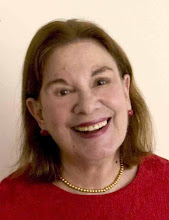Much as been written about today’s multigenerational workforce with its diversified work styles, communication ways, language, values, and perspectives. Having three or four generations interacting in an organization is the beginning of creating a community where everyone can feel that they belong and have something to contribute.
When a workplace community exists, it provides ways for new employees to feel welcomed and enables them to integrate into the organization more quickly and effectively. A viable workplace community strengthens ties between people no matter position, status within the organization, allowing loyalty, respect, bonding, and trust to deepen. And, last, but certainly not least, a true organizational community gives the senior-level staff and executives a reason to remain motivated, engaged and involved.
How do you find and build on the common and compatible points that exist among the generations? Storytelling is a powerful tool that everyone can use and see its application in building a talent community. People love to tell a story, an anecdote, an incident that reflects who they are and experiences that have had an impact on them. Stories allow people to share, empathize, find their common ground, identify with, and learn outside a structured classroom and formalized training.
Stories can be told from either the individual or organization’s perspective. Junior-level employees can tell stories/anecdotes, for example, about their background, passions, career goals, work expectations, interests, images of organization – information that their peers can identify with and that management can begin to form ideas about potential leadership candidates. On the other hand, senior-level staff can share stories about the organization and their own work achievements, for example, regarding the organization’s brand, culture, vision, mission, and epic successes.
Stories can be exchanged, for example, during new employee orientation, introduction of a work team, initiation of a mentoring program, an organizational networking event, at a department/division meeting – with a facilitator for this activity. The role of story cannot be ignored when trying to create a community – its authenticity, purpose, and power leads to a sense of belonging, greater productivity, and identification. The end result is that a multigenerational workforce will feel, “we aren’t that all different after all, we can work together with understanding acceptance and respect!”
Email comments to: Annabelle Reitman, Ed.D. Career Management Strategist, Author
Email: anreitman@verizon.net
Subscribe to:
Post Comments (Atom)

No comments:
Post a Comment